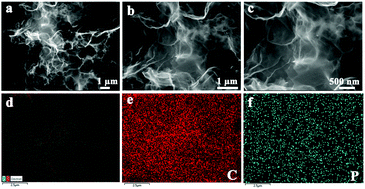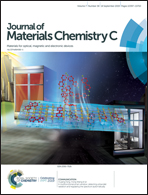Bandgap-tunable phosphorus-doped monolayer graphene with enhanced visible-light photocatalytic H2-production activity†
Abstract
Graphene-based materials hold great promise in future applications due to their phenomenal properties; however, the lack of a suitable bandgap severely limits their practical applications. Therefore, exploring a useful way for tuning the bandgap of graphene is extremely important. To date, it is still a great challenge to modulate the bandgap of a monolayer graphene. Herein, we prepared a novel phosphorus-doped monolayer graphene with a tunable bandgap via a facile one-step synthesis strategy, where the bandgaps varied with the amount of phosphorus. Subsequently, the four-probe and Hall effect measurements successfully revealed the semiconductor characteristics of the phosphorus-doped monolayer graphene. When used as a photocatalyst material for water splitting without a cocatalyst, the phosphorus-doped monolayer graphene exhibited a high rate of H2 production (up to 672.3 μmol h−1 g−1) and excellent stability. The high photocatalytic H2-production activity benefited from the suitable bandgap (1.79 eV) and sufficient visible-light absorption capacity for the sample. Briefly, our study provides an effective way to synthesize a new type of photocatalysts based on a phosphorus-doped monolayer graphene with a tunable bandgap.



 Please wait while we load your content...
Please wait while we load your content...